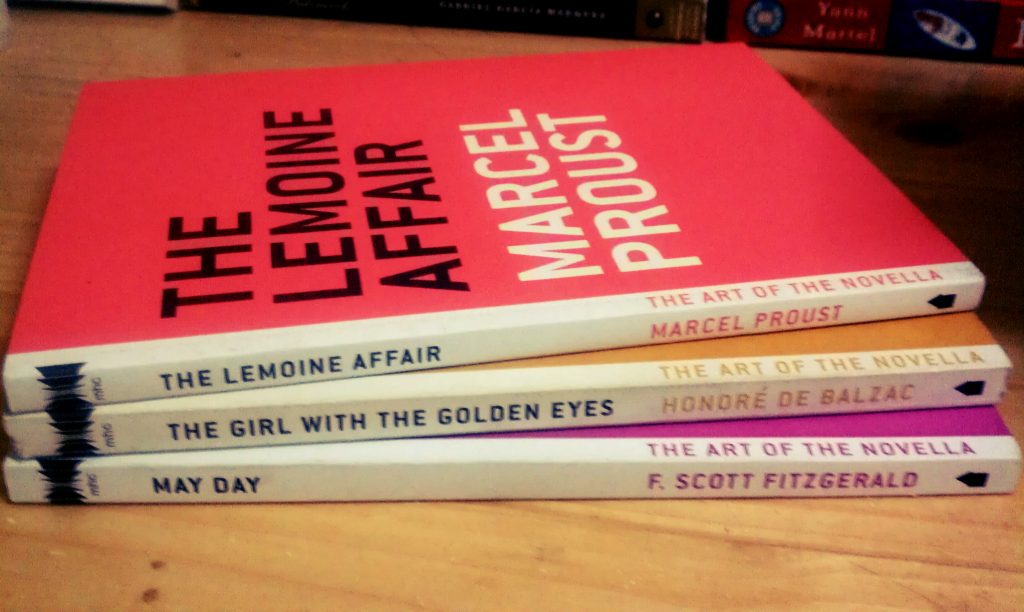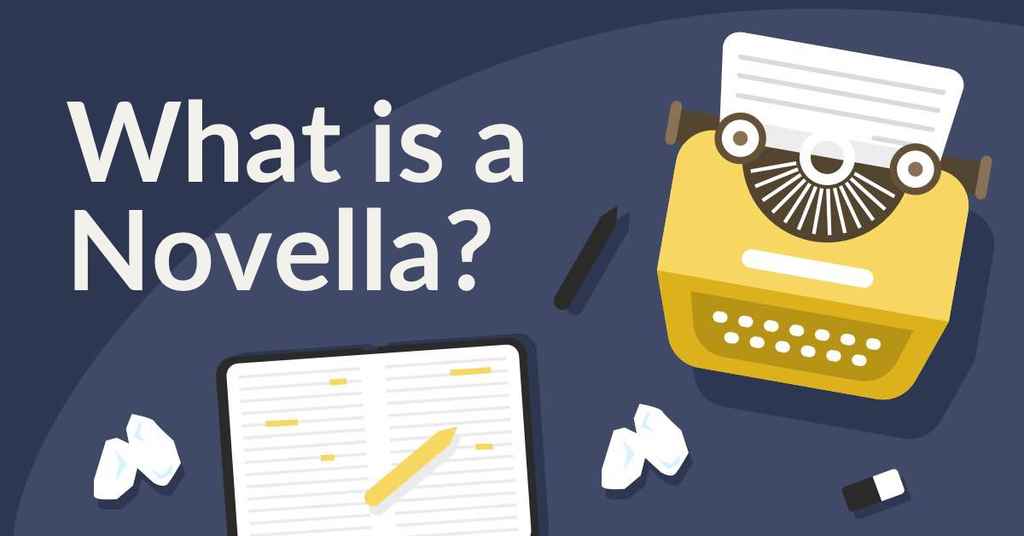Novella vs. Novel – What’s the Difference?

The art of storytelling is a precious gift bestowed upon the wordsmith. It’s an inherent talent – a burning passion for regaling stories of love, joy, laughter, sorrows, and fantastical wonders.
Most writers discover their talent at an early age, using their storytelling antics to no end until they finally answer their calling in the world of fiction. Others discover their passions a little later when they feel more prepared to finally test their mettle. Either way, the surest way to take the world of fiction by storm is to follow this simple advice: brush up your skills and harness your talents with information, experimentation, and ruthless courage.
Once you’ve decided to approach learning to educate yourself in the art of storytelling, you will find yourself embracing formats and mediums best suited for your storytelling talents. Talking about mediums brings us to an important question: what’s the difference between a novel and a novella?
Both are beautiful and flexible mediums of storytelling and fiction writing, but which one should you choose? Keep reading to find out.
Decoding the Difference Between Novel and Novella
Novels and novellas are both popular mediums of fiction writing, and their differences are widely debated. Most experts believe that novels are an entirely different fiction genre from novels, while others maintain that the word count is the only noticeable difference. Interestingly, each linguistic culture and literary movement across the world has a unique definition for the term novella. Naturally, these differences complicate matters significantly.
Let’s start with the easier part: what’s a novel? We are all aware that novels are lengthy and long-drawn fictional tales with comprehensive plot structures, multiple themes, and tons of characters. Novels allow ample room for creative freedom, allowing writers to create highly complex plots and sequences. Essentially, a novel allows the writer to depict the evolution and journey of its characters over a lengthy period of time.
Novels demand writers explore multiple themes and avoid an abrupt ending to keep the readers hooked. Novels involve multiple climaxes and plot twists to map out the life journey of their characters. It’s fair to conclude that a novel is a lengthier piece of work, while a novel offers a brief yet poignant story. So wait, then why aren’t novellas just termed as short stories?
The short story vs. novella is another lengthier debate that we will discuss later on in this article. For now, let’s focus on defining a novella and discussing everything it entails.

What’s a Novella?
A novella is a middle ground between a short story and a novel. Most literary circles classify novels, short stories, and novellas on the basis of word counts. Some argue that it takes 40,000 words for a fictional piece of literary work to be classified as a novel, while others stretch the word count to 60,000 words. This discrepancy in the criteria can make concepts immensely challenging.
Many literary experts argue that the classification of the literary work is determined by the genre and the word count. For instance, a 40,000-word romance story can be classified as a novel, but a 40,000-word science fiction tale is a novella. Clearly, English literary experts don’t have a comprehensive definition and guidelines to classify the novella.
So, let’s turn our attention to its classification in European literary genres. Germans literary circles maintain that novellas, as novellas are called, do not have a specific word limit. Instead, a novella is a story focused on one crisis, challenge, or event and the story ends when the event or crisis concludes.
In Italian literary circles, the term novella stems from an Italian word novelle, meaning new, and it introduces a distinctly refreshing approach to storytelling. Interestingly, the advent of the novellas in literary history can be traced back to the late 18th century, during the early years of the Renaissance – a movement of rebirth and innovation. Writers embraced the novella as it came with flexible rules and no strict impositions to work within a specific set of guidelines.
Here are some general characteristics of a novella that remain consistent across literary circles worldwide:
- A novella contains 20,000 to 40,000 words, ranging between 150-200 pages.
- The story revolves around a few characters explored in great depth.
- The story contains lesser themes, conflicts, and events than a novel.
- Novellas have shorter timelines and don’t depict the evolution of their characters.
- The story mainly revolves around a conflict or event and ends once the conflict is resolved.
- Novellas don’t have many chapters, and most novellas aren’t categorized by chapters or sections.
- A novella can be read in a day or even a few hours.
If you’d like to read some popular novellas before trying your hand at this genre, we strongly advise reading Ernest Hemingway’s The Old Man and the Sea. You can also pick up Charles Dickens’ A Christmas Carol or The Canterbury Tales by Geoffrey Chaucer. The Canterbury Tales is a particularly excellent choice because Geoffrey Chaucer was the first English writer to introduce the novella format in British literary circles.
Reading this book will help you explore the themes and constructs of the earliest novellas, and you can compare them with recently published stories to understand the evolution of formats and modern deviations. The Little Prince by Saint-Exupery is another commendable novella that all budding wordsmiths should devour to inspire their imagination.
If you need more recommendations, or you’re searching for inspiration while working with this genre, head over the LivingWriter. It’s a vibrant and facilitative community designed to help storytellers and writers bring out the best in their craft.
Novella vs. Novel: Key Differentiating Factors
Now that we’ve covered the definitions of both novels and novellas, let’s take a closer look at the key differentiating factors.
Classification
Novels and novellas are classified under entirely different definitions and guidelines, although both are literary works of fiction. A novel is generally more than 200 pages and over 40,000 words, while a novella typically ends at 200 pages.
Most people get confused with the short story vs. novella debate as many characteristics of the novella overlap with those of a short story. Here’s a simple trick to define a novella: it’s a fictional work that’s shorter than a novel and lengthier than a short story.
Plots, Scenes & Conflicts
Novels are riddled with conflicts, plot twists, and scenes as they depict the journey of a character’s lifetime. A life’s journey is filled with numerous struggles, events, and adventures, and a novel can regale these stories with hundreds and thousands of pages and even multiple volumes and sequels.
In contrast, a novella is brief and doesn’t involve the complexities of a novel. The plot is considerably less complex, and the story typically revolves around one major conflict or event. It’s fair to assume that a novella is written for the purpose of narrating one event, and it ends when the event is over.
For instance, a writer can pen down a novella around the Christmas holiday, and the story must end once the holiday season is over. Or the writer can stretch it down to New Year’s Eve, but no further than that.
Characters & Backstories
Novels are lengthier fiction narratives, and therefore, they need tons of characters to make the story engaging and interactive. Revolving a lengthy story around the same characters from the beginning to the end can kill the excitement and fun. Therefore, a novel writer must add new characters with fascinating backstories to keep the story moving forward without losing its gusto.
A novella doesn’t need too many characters and themes; instead, it revolves around a handful of characters. That’s an attractive characteristic that interests many wordsmiths who struggle with character development. In fact, most experts believe that trying your hands at a novella is a highly resourceful way of learning how to build intriguing characters without the added pressure of lengthening their narratives.
Novellas don’t demand a lot of themes and sub-themes, but rather, they revolve around one basic theme. The characters are working towards something – an event, adventure, or challenge, and not necessarily regaling their life’s story or struggles. It could be a story of a summer vacation spent abroad or an adventure that leads a sailor on a treasure hunt in the heart of the Caribbean.
The theme is the general focus of the narrative, and the story draws to an end once the theme is adequately explored and the objective is achieved.
Chapters & Divisions
Novels demand a significant time commitment from both the writer and the reader. They are lengthy and long-drawn, typically divided across multiple sections, chapters, and at times, volumes. Many writers realize that the story is yet to be continued even after penning down thousands of words in a lengthy novel. So, they end up writing sequels and often prequels to add more narrative and creativity to the table.
Talented wordsmiths like J. R. R. Tolkein, George R. R. Martin, and J. K. Rowling penned down multiple sequels to complete their stories as they deemed fit. A novel is never-ending, and it transports its readers into a different world or universe even. The writer can stretch the story however needed to create the narrative and mold it into various creative directions.
In contrast, a novella has no divisions, chapters, or sections. It’s a single narrative told in one go, without any breaks or extensions. There’s a beginning and an ending; nothing in between. Therefore, it’s easy to read a novella within a few hours, while a novel can take days.
These are the general differentiators that make a novella a distinct and more flexible medium than a novel. However, the differences often get blurred when we examine the novella vs. novel debate in the light of literary cultures and classifications practiced worldwide. English classifications often vary from their European and Asian counterparts, and it’s intriguing to explore guidelines from multiple literary cultures.
If you need more help understanding the intricacies of writing a novella, head over to LivingWriter and explore resources to help you get started with this format. A little push and a nudge can help you get down to writing your first novella and stay motivated till the end.

Tips to Craft your First Novella
We’ve compiled some handy tips to help you get started:
- Start with a clear and comprehensive structure tracing your story from the beginning till the end.
- Focus on one event, conflict, or theme, and make it the central pivot of your story. It could be a basketball match, a winter carnival, the holiday season, or a treasure hunt. Your story will end once the event or conflict concludes.
- Don’t pile up too many characters. Adding multiple characters will demand you devote a significant chunk of the word limit to crafting backstories and building coherence for each character. Work with no more than 5-10 characters to create vibrant and intriguing personalities your readers can relate to and enjoy.
- Avoid riddling the story with too many locations, plots, or themes. Focus on one location, such as a small town or a big city, and work with sub-locations within your chosen locality. The same concept applies to themes and plots. Don’t build up too much.
Final Thoughts
Writing a novella is an exciting prospect because it’s a medium that offers ample creative freedom and doesn’t tie you down in a windowless box. Budding wordsmiths who want to move past short stories or flash fiction are strongly advised to explore this genre. You may need some help penning down your first novella, and LivingWriter is a reliable resource geared towards guiding you to success.
Most writers struggle with accountability, discipline, and motivation, and that’s where LivingWriter steps in to help you reclaim your craft with confidence. At the end of the day, writers need all the help they can get to maintain accountability and chase their daily goals.
The novella format is much easier to work with, as you don’t have to dedicate your efforts to a lengthy plot or character development. It’s a crucial milestone that will help you work towards bigger and better achievements, much as it certainly worked wonders for Dickens and Hemingway!